Experimenter Curators' Hub
Punctuation as a method of curatorial practice
Ten years ago, gallerists Prateek and Priyanka Raja established Experimenter Curators’ Hub (ECH) as a platform for developing and sustaining discourse on curatorial practice and exhibition-making. In what became an overwhelmingly well-attended, intensive annual programme, the hub has brought a diverse and prominent group of international curators to Kolkata, India – from Naomi Beckwith, to Adam Szymczyk, and Léuli Eshrāghi – to illuminate the thinking behind their curatorial practice. Like much else happening around the pandemic-ridden globe, this year’s edition took place digitally, with key participants from each prior iteration of the Hub returning to share how time has transformed their output conceptually, collaboratively and culturally. SOUTH SOUTH spoke to Prateek Raja about the ECH initiative and this moment of self-reflection.
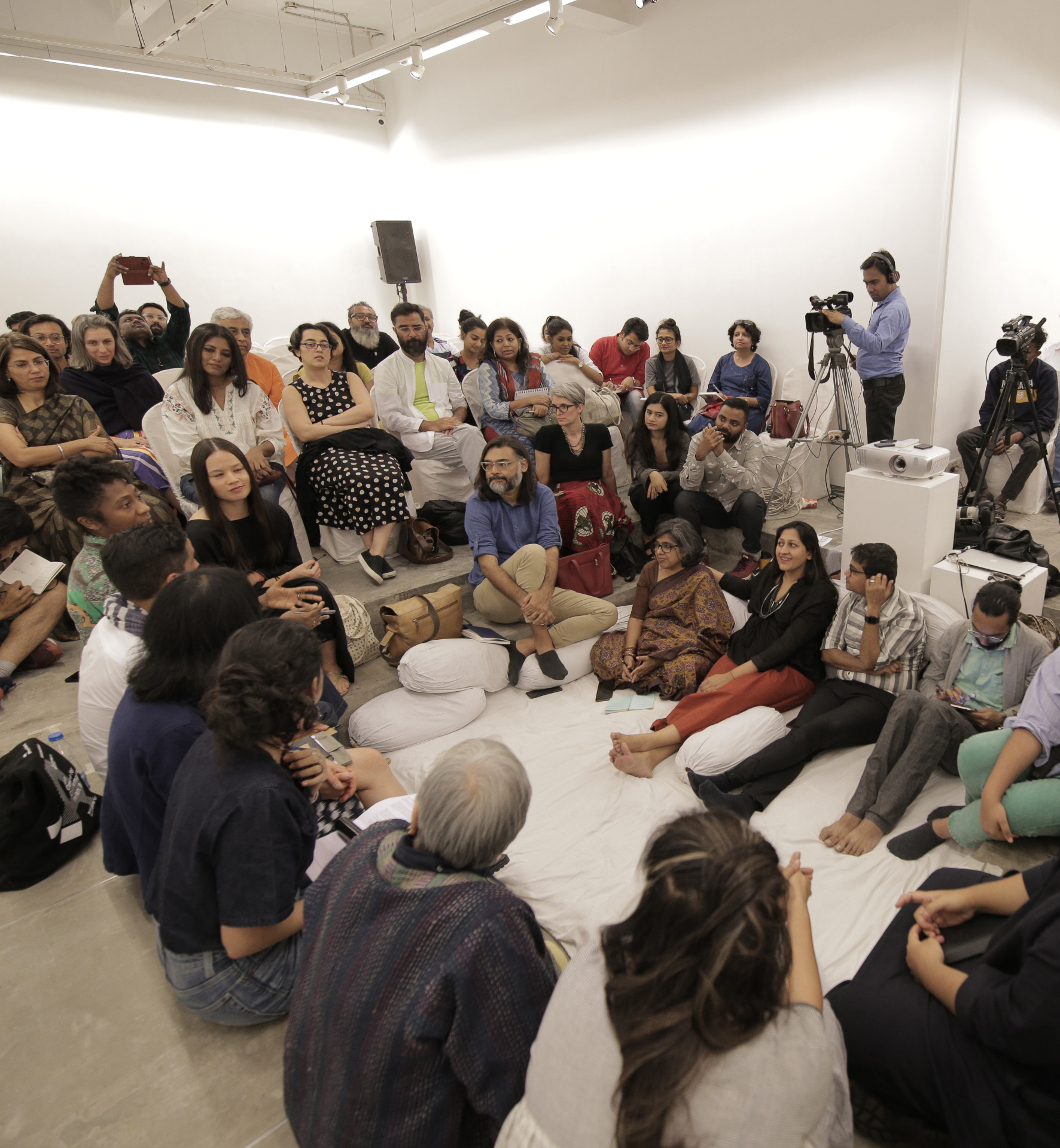
Experimenter Curators’ Hub (ECH), 2019. Courtesy of Experimenter Gallery, Kolkata India.
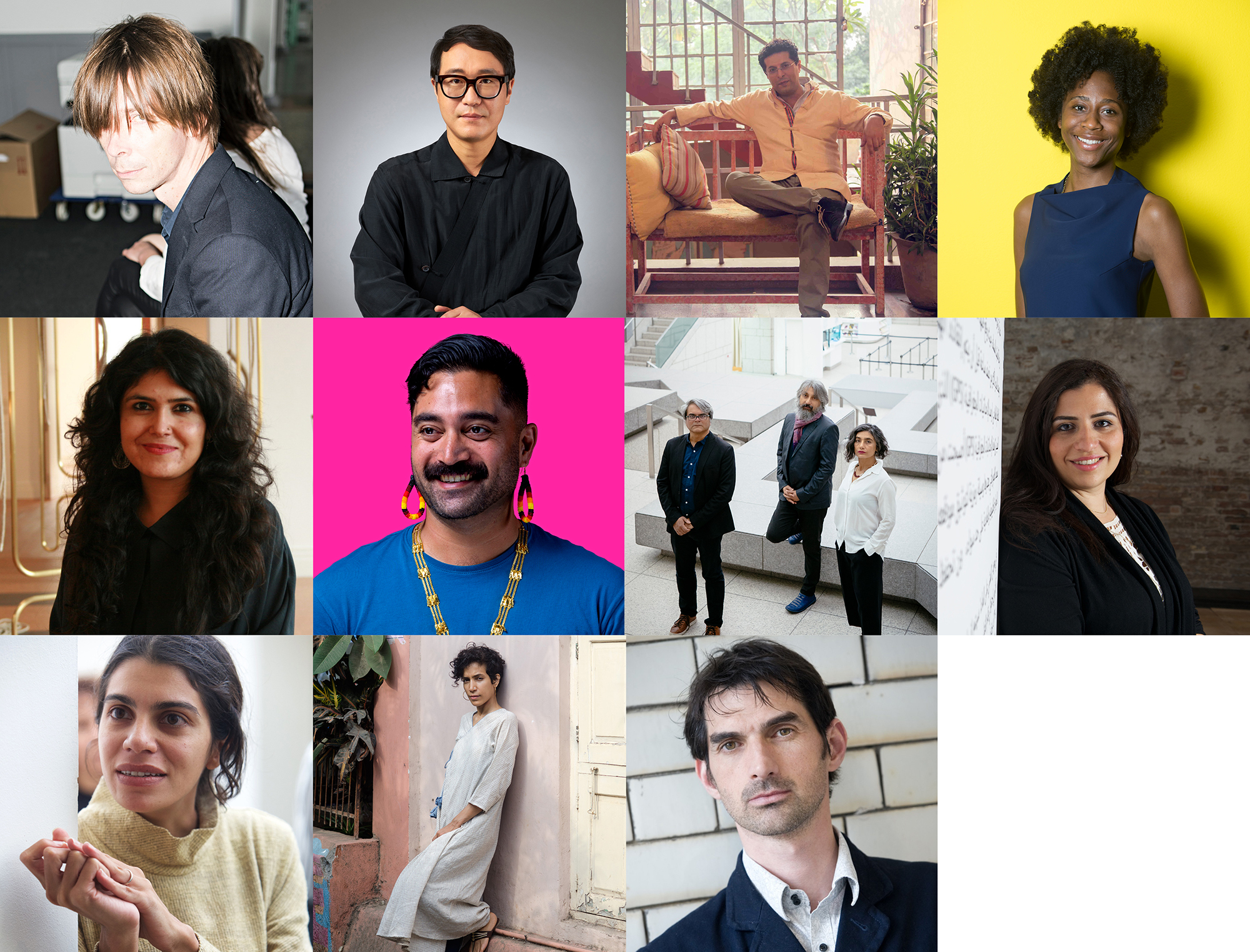
ECH 2020 speakers: Top row, from left: Adam Szymczyk, Photo credit: Gina Folly; Doryun Chung; Naman Ahuja; Naomi Beckwith, Photo credit: Nathan Keay, © MCA Chicago. Centre row, from left: Natasha Ginwala, Photo credit: Mara Zatti; Léuli Eshrāghi, Photo credit: Rhett Hammerton; Raqs Media Collective, Photo: KATO Hajime. Photo courtesy of Organizing Committee for Yokohama Triennale; Reem Fadda, Photo credit: Sofia Dadourian. Bottom row, from left: Zasha Colah, Photo credit: Ernst van Deursen; Gitanjali Dang, Photo credit: Manou; Alessandro Vincentelli, Photo credit: Colin Davison.
SOUTH SOUTH (SS): 2020 is the 10th anniversary of ECH, which is a remarkable programme that generates an ongoing discourse on curatorial practice and exhibition-making. Do you think that programmes that reflect and expand on curatorial discourse, in a year when exhibition-making itself has been a challenge, are perhaps more crucial than ever?
Prateek Raja (PR): When we started the Hub 10 years ago, it was fuelled with a singular passion to learn and build dialogue between curators from across the globe, who are leading thought starters and really the foremost thinkers of contemporary visual arts practice. The central focus of the Hub remains the same and more so in this year. 2020 is indeed a year of exception and in this year of exceptions, it is extremely crucial to discuss the challenges, the opportunities, the rapidly changing playing field in contemporary art. Although there may have been rescheduling challenges and extensions through the year and many exhibitions may be on hold, yet curators have consistently questioned very important aspects that confront our world today, whether it is about the BLM movement, the global health crisis, and our continued environmental challenges, amongst many others. These are moments of crucial change and it is more important than ever to build dialogue and conversation, something that the Curators’ Hub does exceptionally well.
SS: For this edition you’ve invited a key participant from each prior iteration of the Hub. The programme is highly diverse and international. What did you take into account when inviting these participants historically?
PR: That’s correct. We feel it is the need of the hour to introspect and self-reflect, on our choices, our actions, our future and even more importantly, the present we find ourselves in. We invited a curator from each of the previous editions of the Hub keeping in mind their practice and the overall arc of how their work has evolved since then. It was an amazing possibility to gather once again, using time as a measure, not just a durational measure, but as a measure for temporality, for continuity and slippages, for reflection and even a call for action. Stopping, adding a punctuation as a method to viewing curatorial practice in the way of stopping to reflect on where we are or simply allowing some time.
SS: In the Art Basel panel discussion on the Art of Conversation: On Forums, Summits, and Symposia in 2019, Prateek, you speak about conversation as a way of life in Kolkata, and about the power of conversation. Why, as gallerists, did you decide to focus on conversations about curatorial practice in particular?
PR: Thank you for watching this conversation. Kolkata is a unique place in that respect, because the common person can cross reference, can present a contrarian point of view and build a constructive, critical conversation that is able to bridge between a wide discipline of the arts. It is ingrained in the very nature of the city and its people. The city has been the center for arts, literature, philosophy, linguistics and all forms of the arts for over two centuries and the common public is a receptive, yet argumentative audience. For us constructive argumentation is a key tool. The reason that we have a politically agile, deeply entrenched program in the city is because of the audience it attracts. Our work is deeply influenced therefore by the concerns and the voices that are raised through the work of our artists and the multiple mirrors they show to the times we live in, through the work they do.
SS: As this 10th anniversary is presented as a moment of reflection, what do you think have been some of the most memorable outcomes of the Hub since its inception?
PR: It is impossible to pick moments out. The hub is unique from other forms of coming together. It is not a symposium, it is not a lecture, it is not a presentation, or a meeting, or a lecture, or a workshop. It is truly a huddle – a hub, a central coming together of energy and discourse which is what makes it incredibly powerful as a gathering and the possibilities that emerge from it are inspiring to us all. There have been so many fundamentally crucial moments that have emerged over the years at the hub that it’s really not possible to select a few. What I think both Priyanka and I cherish, is that being at the hub is a bodily experience – you tend to emerge out of it over 4 days, exhausted – an exhaustion that is a constructive, profoundly physical as well as mental experience that has the ability to question aspects that we take for granted. This is one reason why curators, audiences, artists and others keep returning to the hub. It offers a possibility that is incomparable to other dialogical experiences.
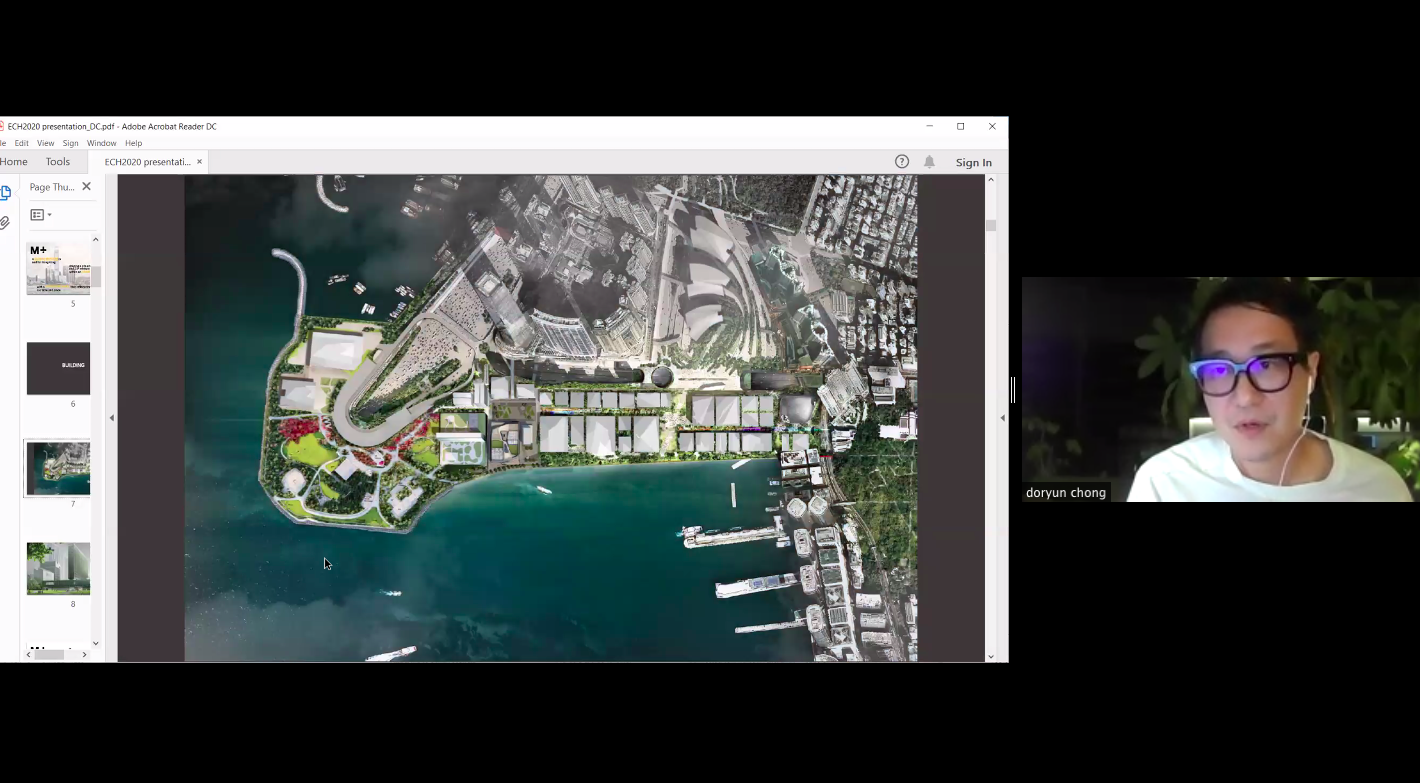
Doryun Chong presenting on Experimenter Curator’s Hub (ECH), 2020. Courtesy of Experimenter Gallery, Kolkata India.
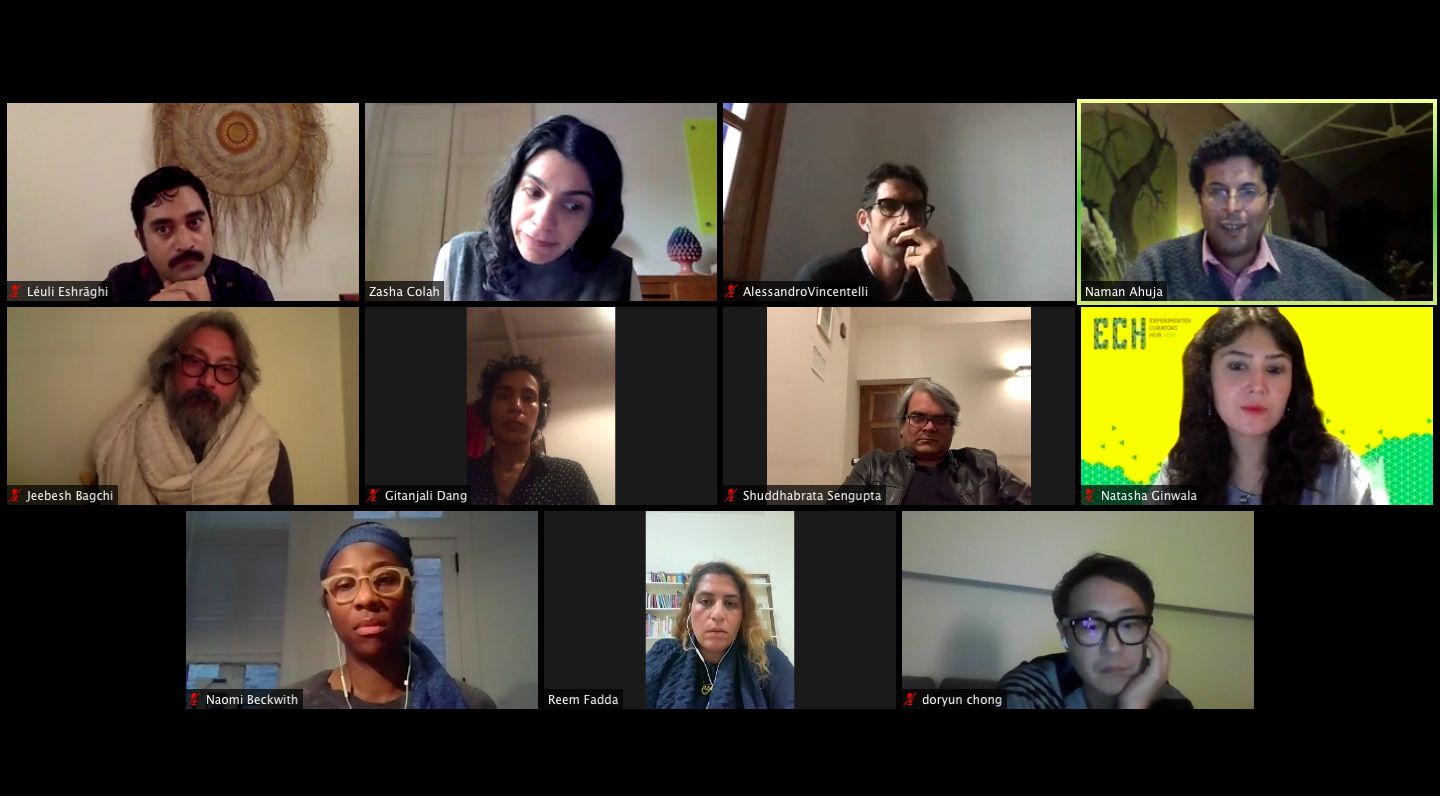
Panel discussion on Experimenter Curator’s Hub (ECH), 2020. Courtesy of Experimenter Gallery, Kolkata India.
SS: Perhaps something positive that has emerged from this difficult year has been an emphasis on the need for more collaboration in the art world. ECH appears to have the potential to be a major catalyst for collaboration. Have you seen particular examples of this emerge?
PR: The hub from the very beginning has been a collaborative effort. The thought of the hub was seeded in our minds from a personal need to learn and share the incredible knowledge that the curators collectively bring together. Although it started from our personal interests, collaboration is key to the nature of the hub. One of the reasons that the hub is successful is because it is entirely democratic. It has always been free of charge; it breaks all kinds of hierarchies that we unknowingly become part of because we are used to accepting a particular kind of thought. In its physical manifestation we always cannot admit more than a certain number of people. But that physicality is important to keep and as I said earlier, the hub is as much a bodily experience as it is a mental one. This year of course we did the Hub online, which has its advantages and we had thousands of people joining us from various parts of the world, but human interaction at a democratic, non-power level is a fundamental aspect of the Hub. We are extremely aware of and sensitive to the politics of knowledge sharing, the inequalities that exist in our education and dissemination structures and the challenges that these throw up. Hence the Hub has, since its inception, been a space for democratization and collaborative work. We work closely with our partners thinking of the long term, they share the vision we have and understand the long-term impact of the work we do, and hence seeds of collaborative working have been sown from its inception. All the presentations of the hub over the years are freely available on our website, and aids research and knowledge sharing, and the residual value of each edition of the hub is equally important. For example, we will publish next year, a book that will include transcriptions of all the curators’ presentations, interviews, and other related essays, that will mark the completion of 10 years of the Hub. This is a deep research-led, time-based project and we have been working on this now for a year already, together with several writers and thinkers together who have come to the hub over the years.
Kolkata is a unique place because the common person can cross reference, can present a contrarian point of view and build a constructive, critical conversation that is able to bridge between a wide discipline of the arts.

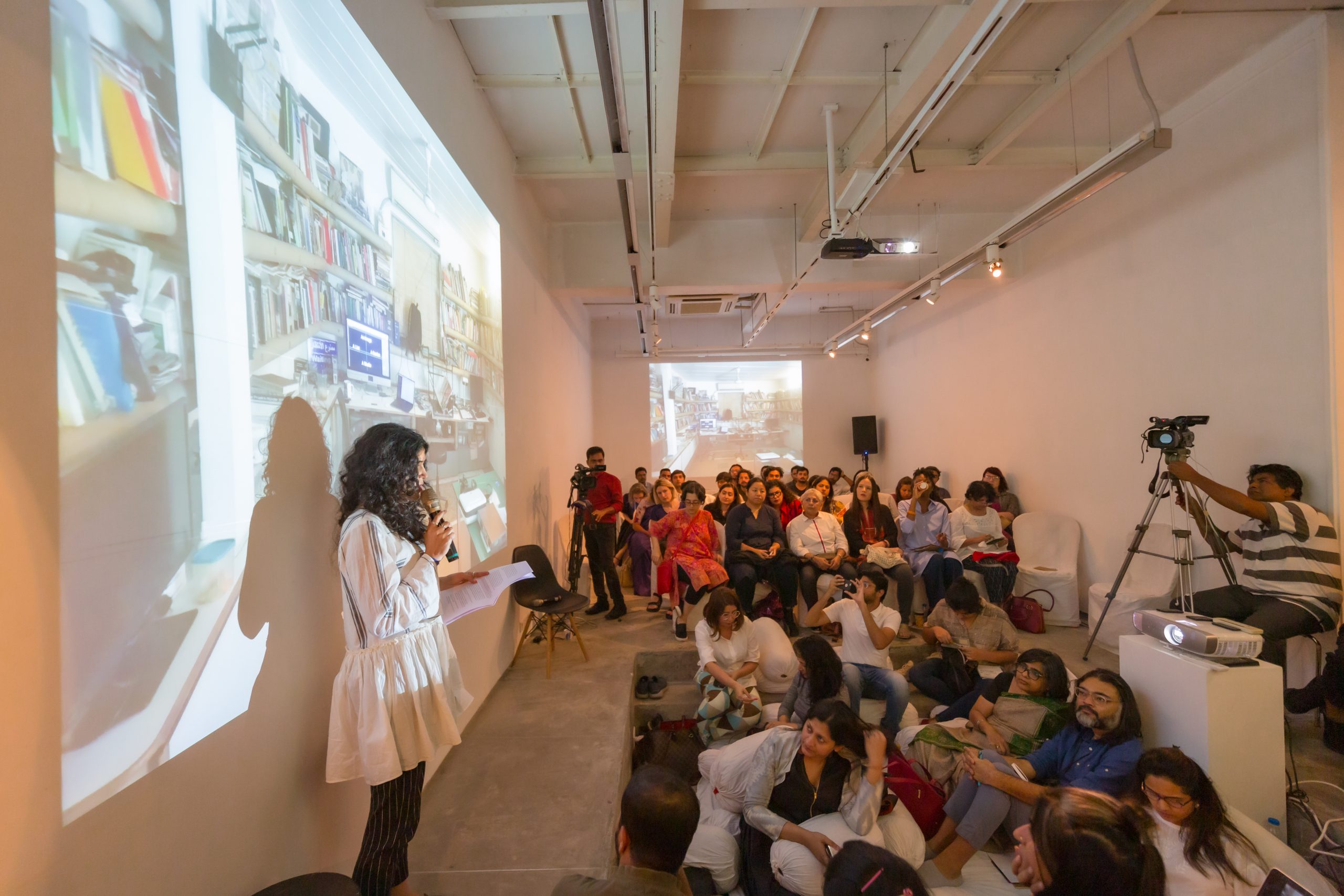
Top and bottom: Experimenter Curators’ Hub (ECH), 2019. Courtesy of Experimenter Gallery, Kolkata India.
Credits
Many thanks to Prateek and Priyanka Raja, Shivani Kandhari, Joshua Nassiri Giri and Vidhi Todi of Experimenter Gallery, Kolkata India.
All images courtesy of Experimenter Gallery, Kolkata India.
